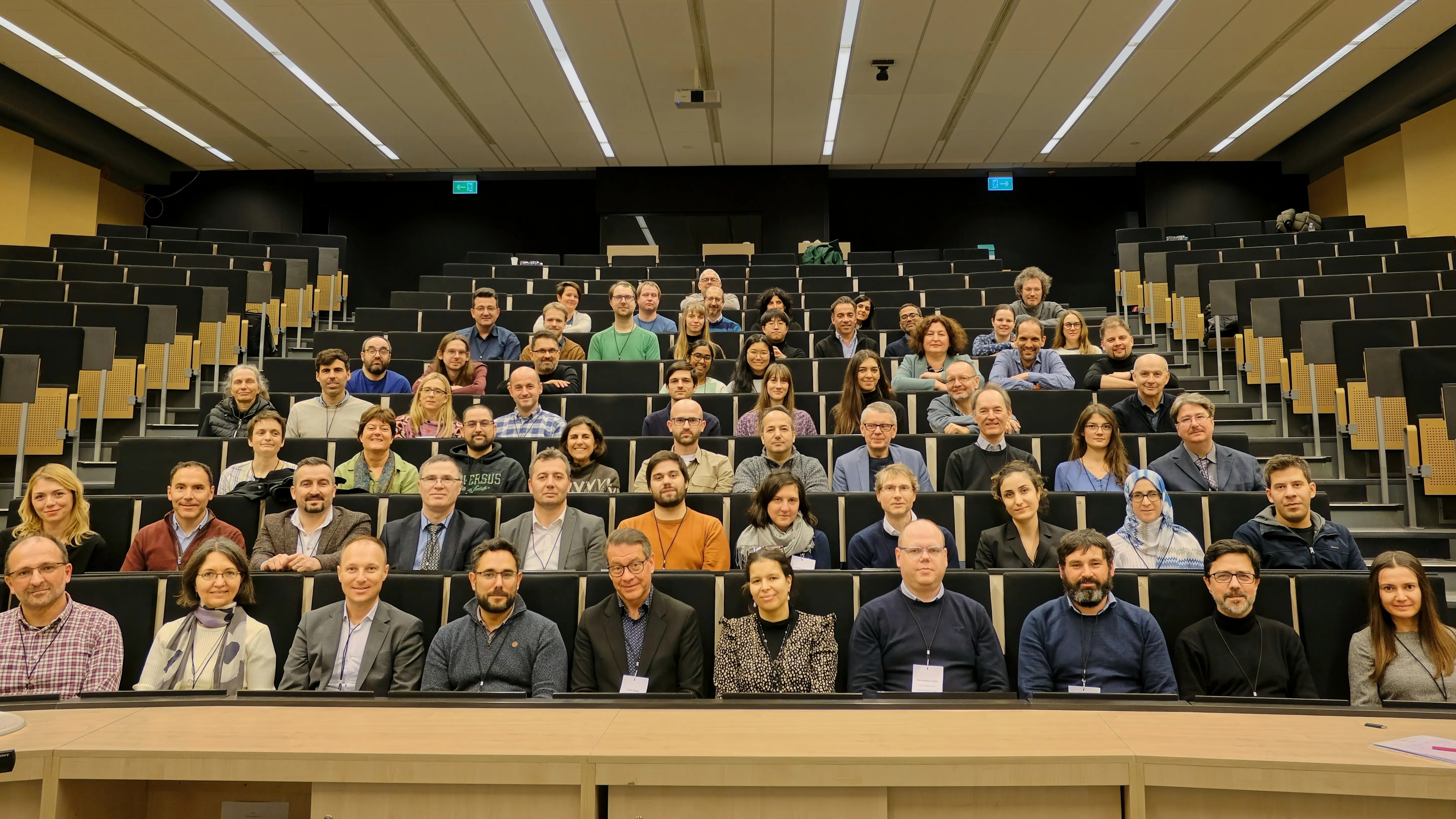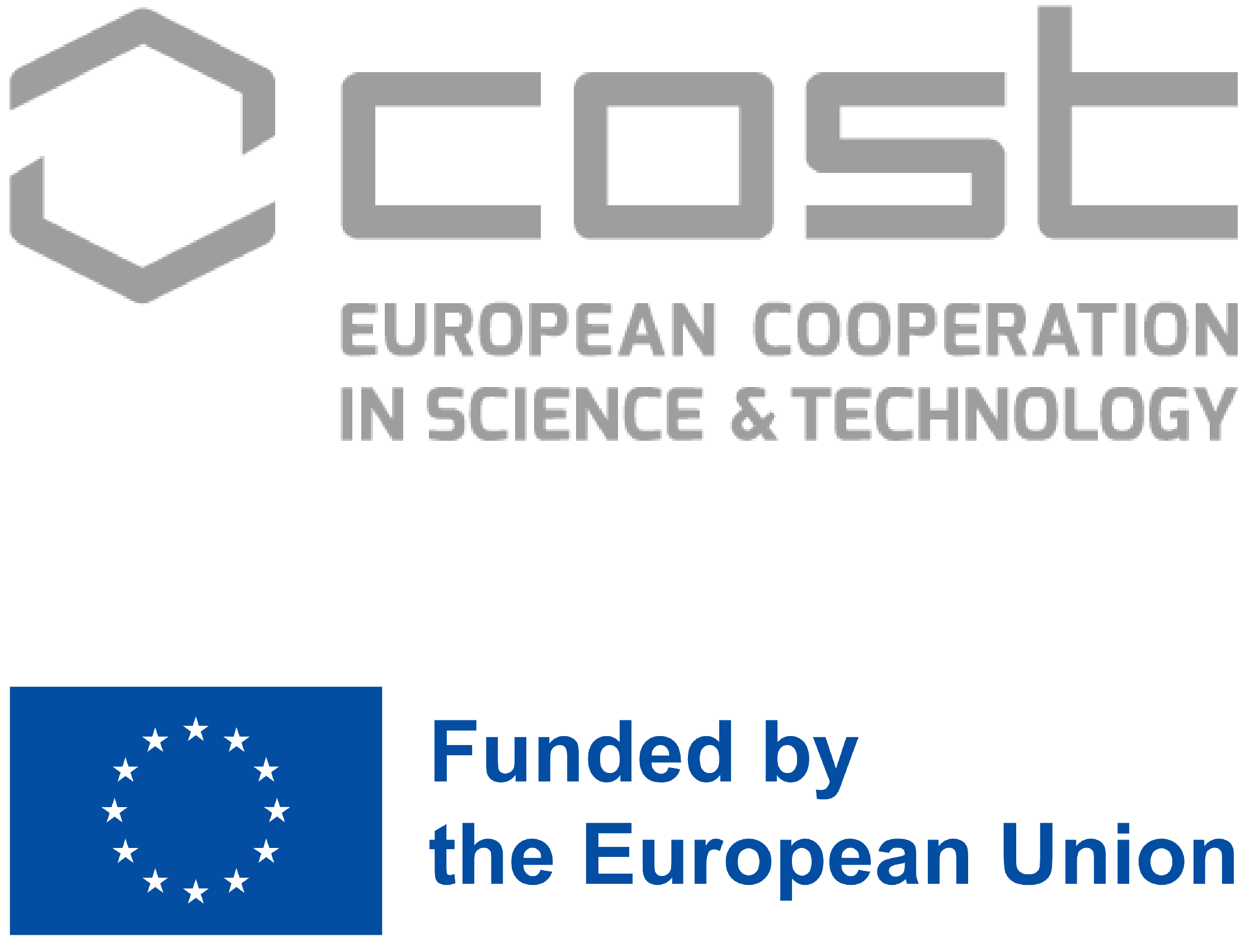
First General Meeting
AGH University of Krakow
Faculty of Physics and Applied Computer Science
ul. Reymonta 19
30-059 Kraków
Poland
19–21 February 2024

Programme
Monday, 19 February 2024 – Workshop
| 09:00 – 09:30 | Welcome Chair: Szymon Łukasik, Local Organiser |
| Introduction to ROAR-NET Özlem Karsu, Action Vice-Chair | |
| 09:30 – 10:30 | Oral presentations Chair: Jürgen Branke, United Kingdom |
| Application of a periodic multi-products pick-up and delivery problem to an industrial waste collection problem Wassila Mtalaa, Luxembourg Institute of Science and Technology, Luxembourg AbstractThis work tackles a challenging logistics problem faced by a Luxembourg-based company that provides industrial waste collection services to a range of professional customers. A global strategy is proposed with the aim to plan optimally the collection of solid waste. This requires to incorporate all the operational constraints regarding the planning and routing of the services while considering the objectives of balancing the workload between the drivers, minimizing the total distance travelled and the number of used vehicles. This is a multi-products periodic pickup and delivery problem which is solved in several steps. The first step of the work is to assign the customers to the different weeks of the month and then to plan the daily assignment of these customers to the garbage trucks. This leads to a multi-objective problem which is solved using a lexicographic method. The next step of the strategy consists in the proper routing of the collection trucks. The resulting routing problem which is addressed is solved using an adaptive large neighbourhood search. The results show that the proposed method is competitive as compared with other methods of the literature. | |
| Markdown optimization in fashion retail: a decision support system Yasemin Gökdağ, Invent Analytics, Türkiye AbstractIn retail, especially in fashion retail, most of the products are aimed to be sold out by the end of the season. In order to achieve a certain inventory level, retailers apply clearance discounts at the end of a season period. Determining the best pricing strategy of these clearance periods is the main goal of the markdown optimization problem. Solving this problem requires planning ahead and complex constraints since any pricing decision given for a period directly affects the consecutive period's decision, and different products' pricing decisions affect each other. In this presentation, we will briefly explain the markdown optimization problem in retail analytics. Then, we will go into the details of the solution approach implemented by our company. It includes a long-term time-series forecasting, a MIP model to get the optimum long-term pricing strategy and a complementary heuristic approach. We will also discuss a hybrid application where we use the heuristic approach and MIP model together to achieve the outcome quality desired by our clients. | |
| 10:30 – 11:00 | Coffee break |
| 11:00 – 12:30 | Oral presentations Chair: Serpil Sayın, Türkiye |
| Decision-making support for optimal railway node capacity in the Port of Trieste Giovanni Longo, Laboratorio di Ingegneria Ferroviaria e Traffico srl, Italy AbstractIn a context of private operators competing for the same infrastructure and the residual capacity is low, optimization is essential to support public entities in decision-making processes to ensure both equity and efficiency when managing transport systems. This contribution presents the methods and instruments which have been integrated to face such task in the Port of Trieste, which is the first Italian port for throughput and rail movements. According to the proposed approach, railway transport processes have been first modelled through a standardized modelling language with the aim of facilitating the analysis of the operational model and the identification of possible bottlenecks. Then, graphical models have been detailed with data concerning the duration of railway activities, available infrastructural and operational resources, the residual capacity on the national railway network and the occurrence of specific events. Model parametrization has been functional to process simulation, which has been carried out by means of a discrete-event simulation engine. This latter has represented the black box of a multi-disciplinary optimization framework implementing genetic algorithms, which enabled to compute the optimal port railway capacity on varying of the destination sequence of arriving trains. Besides, optimization scenarios have been optionally constrained on a minimum capacity value for each terminal, to test the impact of their actual operability on the capacity of the whole node. Finally, obtained outcomes have been gathered into a database and visualized using a parallel coordinates plot, which displays the capacity of the entire port railway system and of every individual terminal as the numerical variables under investigation. Thanks to this resulting chart, authorities in the Port of Trieste now dispose of an effective digital tool to estimate changes in railway capacity at terminal and port level, and to assess the system responsiveness by comparing optimized values with expected trends. This complex system may be improved in a next step of the research through the integration between black and white approached in order to gain the maximum benefits from each of them. | |
| Energy consumption minimization in railway networks Teresa Montrone, ESTECO SpA, Italy AbstractAlthough the railway system is among the most sustainable means of transport, the energy used by trains is not entirely optimized. The optimization of train movements could render the railway system even greener by reducing energy consumption and CO2 emissions. In this work, the minimization of energy consumption is taken into account both in the operational phase, in which traffic may be perturbed by unexpected events, and in the planning phase, in which the train timetables are defined. These two cases are handled by two different approaches: in the first case, we consider the weighted sum of energy consumption and total delay as objective function, based on the solution of a mixed-integer linear programming model (white-box approach). In the second case, we model the problem as a multi-objective problem and we solve it by using the randomized optimization algorithm Multi-Objective Genetic Algorithm (MOGA-2) (black-box approach). We show the tests performed for both cases, their challenges and the analysis of the results. | |
| Who is the User? Framing problems with multiple and diverse stakeholders Joshua Knowles, SLB – Schlumberger Cambridge Research, United Kingdom AbstractReal-world problems depart from idealised optimization problems in several different ways, many of which ROAR-NET is seeking to understand better. One of the central problems is that of not knowing what the problem is, and this is exacerbated significantly when we don't know who the stakeholders or users are. I will reflect on observations from about 4 years of trying to formulate (and solve, but that's the easy bit) industrial problems with multiple stakeholders. I offer no definite answers, but will try to provide some useful anecdotes that hint at a positive direction! | |
| 12:30 – 14:00 | Lunch |
| 14:00 – 15:30 | Oral presentations Chair: Luca Di Gaspero, Italy |
| Simulation based optimization Alexander Kinast, RISC Software GmbH, Austria AbstractOver the past decades, processes of all kinds, especially industrial processes have become more complex. For example, flexibility in production has increased, allowing more product variants to be manufactured. However, this requires more extensive models and additional constraints. A digital model/twin with all constraints of real processes can be created and optimized, to find the best solution for a given problem. The talk starts with a general introduction to the topic of simulation-based optimization and existing simulation tools. After the introduction, it will focus on an available lightweight open-source simulation and optimization framework, Easy2Sim, which has been developed in the OOE SPA project. This framework can be easily included in any project, allows simple optimization, and has modern interfaces to other software tools. A component-based structure allows fast development of simulation components that can be coupled with a visualization. This visualisation of results can be a powerful tool to enable informed decision-making of the end user. | |
| "Mechanism, not policy": On a problem modeling API for meta-heuristic search Alexandre Jesus, Siemens SA, Portugal AbstractBy defining how optimization algorithms interact with problem models in a black-box fashion, a clear separation between the model and the algorithm is achieved, which can benefit both problem modelers and algorithm developers alike. On the one hand, problem modelers can independently devise and implement models for their problems without the need to also implement the algorithms themselves, and can test their model with all available algorithms with little development effort. Moreover, any changes to the model can also be tested with relative ease. This has the potential to greatly speed up the development process of quality models for new problems. On the other hand, as more models become available, algorithm developers can test their algorithms on an ever-growing set of benchmark problems and models. In this talk, I will present an experimental API for modeling combinatorial optimization problems to be solved by constructive and local search algorithms. This API defines a small set of methods for models to implement and for algorithms to consume. Moreover, I will present scenarios where this framework has already been used. In particular, in its most recent iteration, the API has been instantiated in Python and has been used to implement models for problems of varying complexity, as well as several meta-heuristic search algorithms. Furthermore, it has been successfully adopted as a teaching tool in courses on problem-solving with meta-heuristic approaches at the University of Coimbra. | |
| Nevergrad: A library for black-box optimization Jeremy Reizenstein, Meta – Meta AI, United Kingdom AbstractIntroduction to Nevergrad which collects many algorithms and benchmarks, making it easy to test new ones, and is the venue for research and sharing of easy-to-use optimization wizards. | |
| 15:30 – 16:00 | Coffee break |
| 16:00 – 17:30 | Panel discussion Moderator: Carlos M. Fonseca, Action Chair Panelists
|
| 17:30 – 18:00 | Close |
Tuesday, 20 February 2024 – Working Group meeting
| 09:00 – 09:15 | Welcome |
| 09:15 – 10:30 | Break-out sessions |
| 10:30 – 11:00 | Coffee break |
| 11:00 – 12:30 | Break-out sessions |
| 12:30 – 14:00 | Lunch |
| 14:00 – 15:30 | Break-out sessions |
| 15:30 – 16:00 | Coffee break |
| 16:00 – 18:00 | Plenary WG presentations and discussion |
Wednesday, 21 February 2024 – Management Committee meeting
| 09:00 – 10:30 | MC meeting |
| 10:30 – 11:00 | Coffee break |
| 11:00 – 13:00 | MC meeting |
| 13:00 – 14:00 | Lunch |

